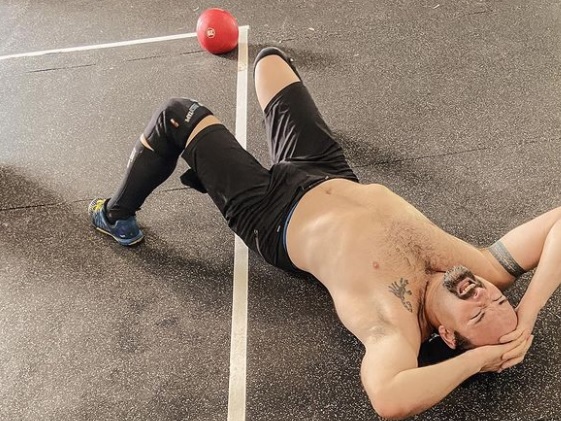What Makes a “Good” Workout?
by Erik Castiglione
It’s a common thought that to have a “good” workout, you should be drenched in sweat, maybe coughing up a lung (or at least out of breath), and that you really need to “feel” it. This coincides with the thought that a “good” workout should make you sore as well. This gung-ho attitude is what attracts a lot of people to CrossFit in the first place. In many CrossFit gyms, you leave a class feeling like you just worked out HARD.
This attitude is prevalent, but less extreme in other gyms as well. Members conflate sweating, labored breathing, and working hard with having a good workout. My last gym had a program dedicated to this. It was a bootcamp style program where people showed up every day, did a bunch of random light movements combined with running or rowing, sweated gallons of water, got out of breath, and left feeling accomplished. We had a couple “benchmark” workouts that we’d repeat several times a year, and very rarely did I see anyone’s score improve in these workouts from year to year. Nor did I see them use more challenging movement options – members who used 10 lbs DBs upon joining were still using the same weights 3 years later. If they weren’t making progress, but they felt like they were working hard, were the workouts really “good?”
This begs the question, what constitutes a “good” workout? Does it need to crush your body and soul? Do you even need to sweat? The answer the last two questions, of course, is NO. When you follow a well-organized program, it’s very simple to have a good workout – simply show up and strive to follow the goals for the day. If the goal is to pace yourself in the conditioning piece, or to do a particular movement in unbroken sets, scale accordingly so that you can. If you’re told to keep a conversational pace, make sure you do. We heavily regulate the intensity in our program to AVOID crushing your soul day after day, because we understand that it’s not the workout that makes you better; it’s your ability to recover from it that does. If you crush yourself for days on end, you simply won’t recover. Now, we do have days where we want you to feel pretty wrecked after the WOD. These days are planned, and serve a larger purpose; they’re not randomly thrown in to make you feel accomplished.
I’ve seen the idea of the “80%” workout circle the internet numerous times, and I can’t remember who first coined the idea (maybe Paul Carter or Dan John, but it wasn’t me). The idea is simple:
– 10% of your workouts feel like crap. You’re going to feel off, and unmotivated. You may need to call it a day, or just phone in the workout and take it easy. Totally cool.
– 10% of your workouts are AMAZING. Every feels dialed in, you’re firing on all cylinders, and you feel like you could one-punch knockout Thanos.
– 80% of your workouts are okay. We call these “punching the clock” workouts.
It’s these 80% workouts that are the most important. Even if they don’t feel like much, this is where you make the most progress. Show up, do the prescribed work, and call it a day. This means adhering to the goal of the conditioning piece. And it means NO MISSED REPS for strength work (with a little wiggle room for heavy snatches). Doing this will ALWAYS give you a good workout, because it’s part of a larger plan. You’re here to train and get results, not to exercise for the sake of exercising. Trust the program, and you’ll have long-term success without feeling chronically beat up. That will ensure that you continue to have good workouts. See you in the gym.
Further reading:
Workouts vs. Programming
How We Adapt to Training
Trust the Process

